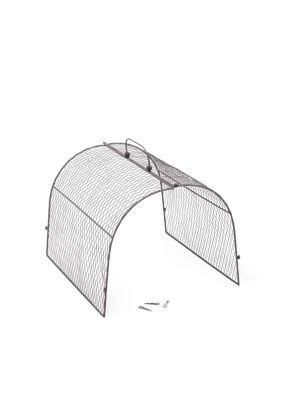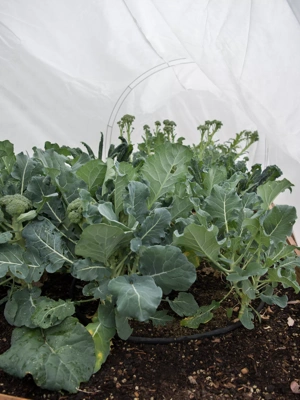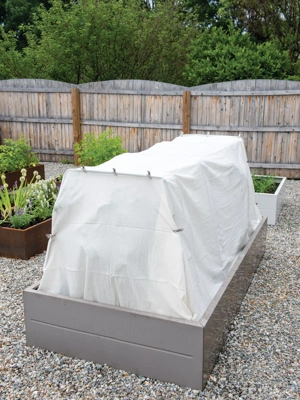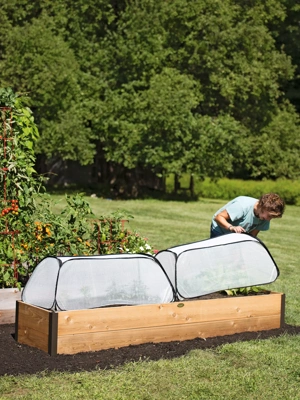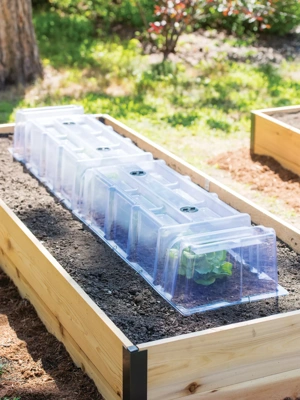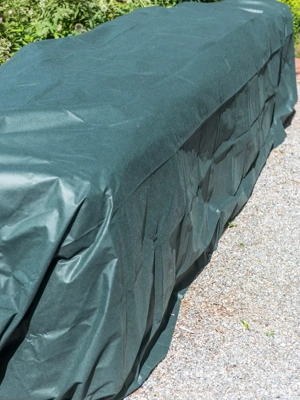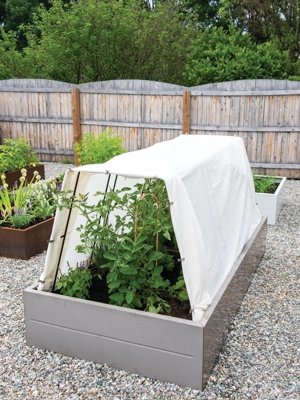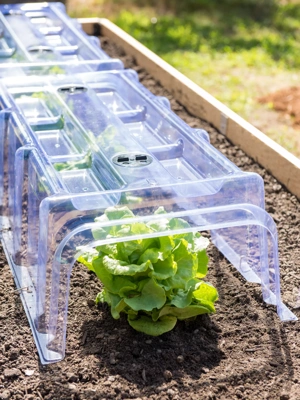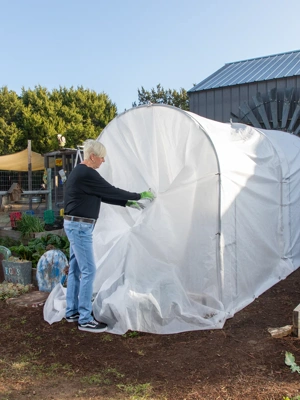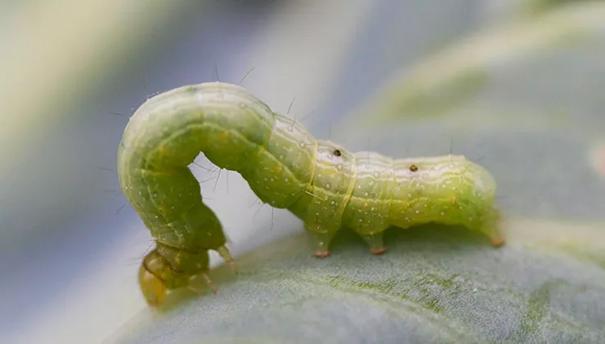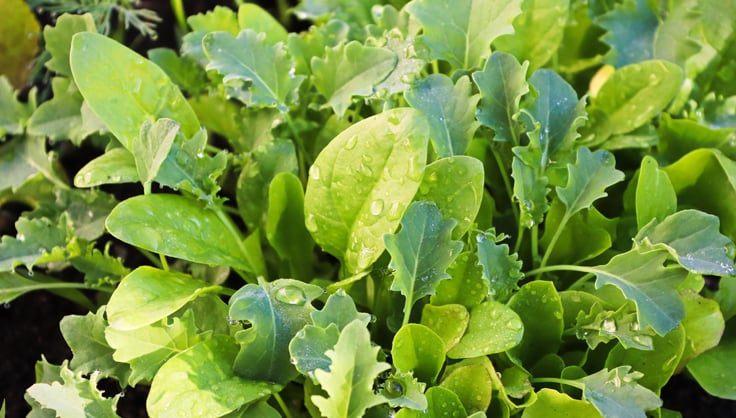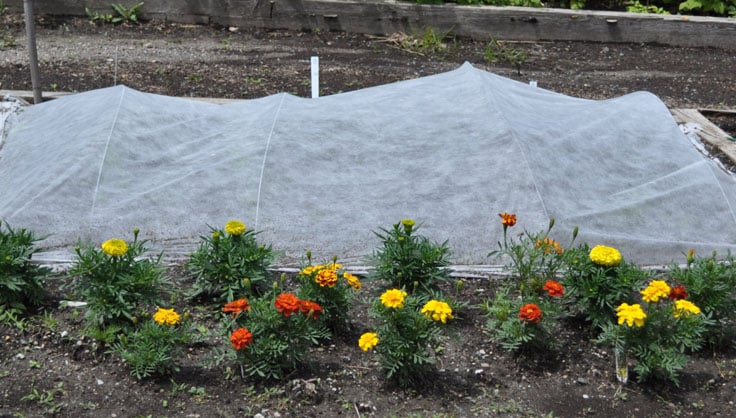Cauliflower

Garden-fresh cauliflower is a delicious treat, but for a small raised bed, it's a bit of a luxury crop. Unlike its productive cousin broccoli, cauliflower produces only one head per season (and no side shoots) and it takes up just as much space.
Cauliflower is also a bit fussy about growing conditions. It wants nearly neutral soil pH (6.5-7.2) and needs a consistent and plentiful supply of moisture. If the soil gets too dry or the weather gets too hot, the plant may not produce a usable head. And unlike most vegetables in the cabbage family, it is somewhat sensitive to cold. Though the seedlings will tolerate a light frost, they should not be planted outdoors until daytime temperatures consistently stay over 50 degrees F.
Start cauliflower from seed indoors 5 or 6 weeks before the last frost. Seedlings tend to suffer from transplant shock if they get too big, so if you buy plants from a greenhouse, choose smaller, not bigger plants. If seedlings get root bound in their containers they will rarely produce anything more than a hard and inedible little knob or "button" instead of a big, snowy white head. Slip the plant out of the pot and take look at the roots; reject any that are root-bound.
Cauliflower are heavy feeders, so at planting time you should mix in compost and an organic all-purpose fertilizer. It's a good idea to side dress the plant with a little more fertilizer half way through the summer, or water in some diluted fish emulsion or seaweed fertilizer.
Pest issues are the same as those of broccoli: cut worms, flea beetles and cabbageworm. Covering plants with garden fabric (row cover) will help them get through the early part of the growing season when pests usually cause the most problems.
Purple cauliflowers are beautiful, but they take 4 weeks longer to mature than the white ones. They also tend to be even more persnickety about growing conditions. You may find that of six plants only a couple will produce a real head. If you're successful, it's a harvest to be proud of. Remember to serve those purple florets raw, as the color changes when cooked.
Some gardeners blanch their cauliflower to keep the heads as white as possible. To do so, you need to tie a few leaves over the developing head when it gets to be about 2 to 3 inches across. Don't wait too long to harvest your head of cauliflower. Once the curd (that's what farmers call the flower) starts to separate, it will soon go by and lose flavor and texture.
Last updated: 01/28/2021
Print this Article:
Related items
Related Articles
Get the Dirt
Stay up to date on new articles and advice. Please fill out the information below.


